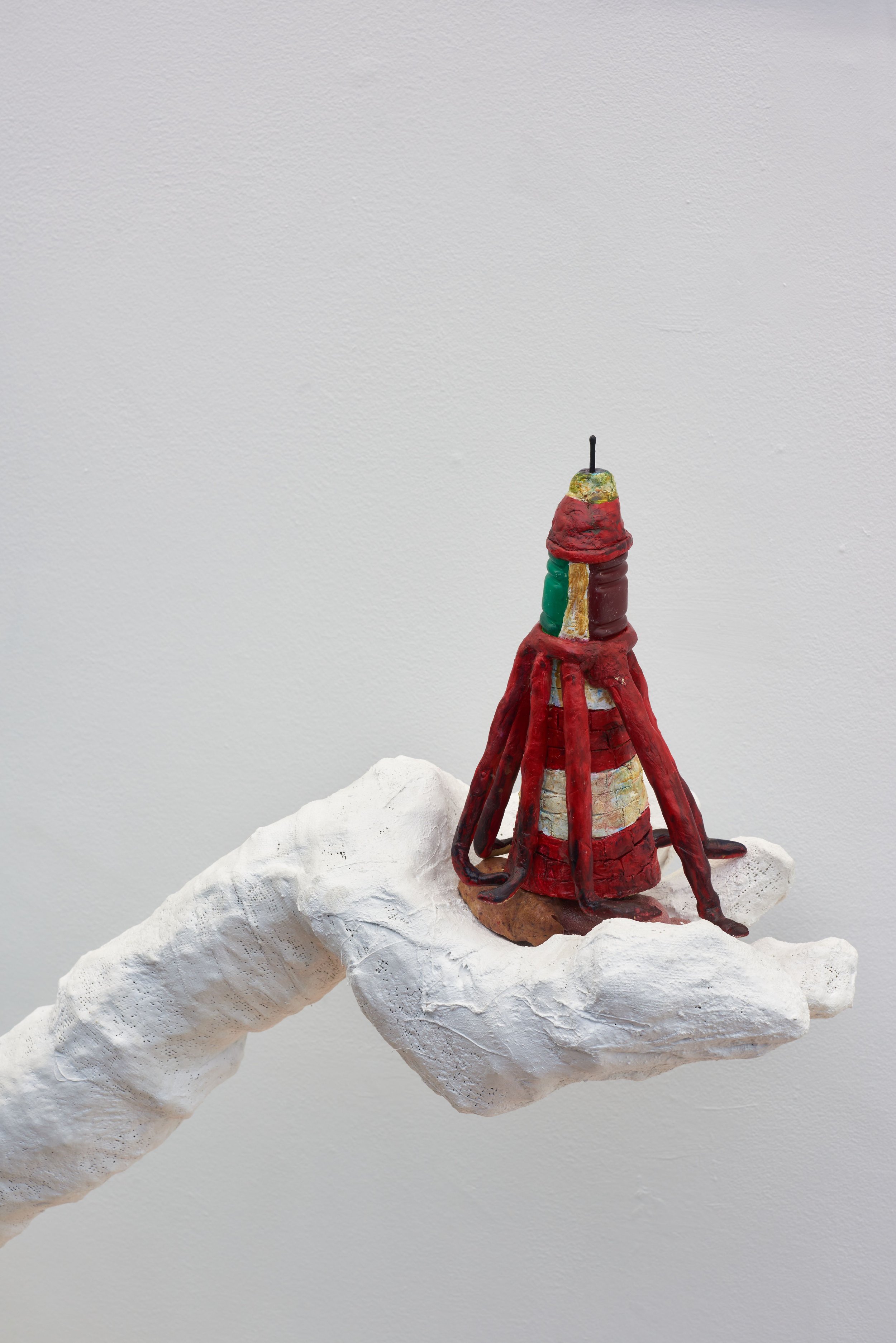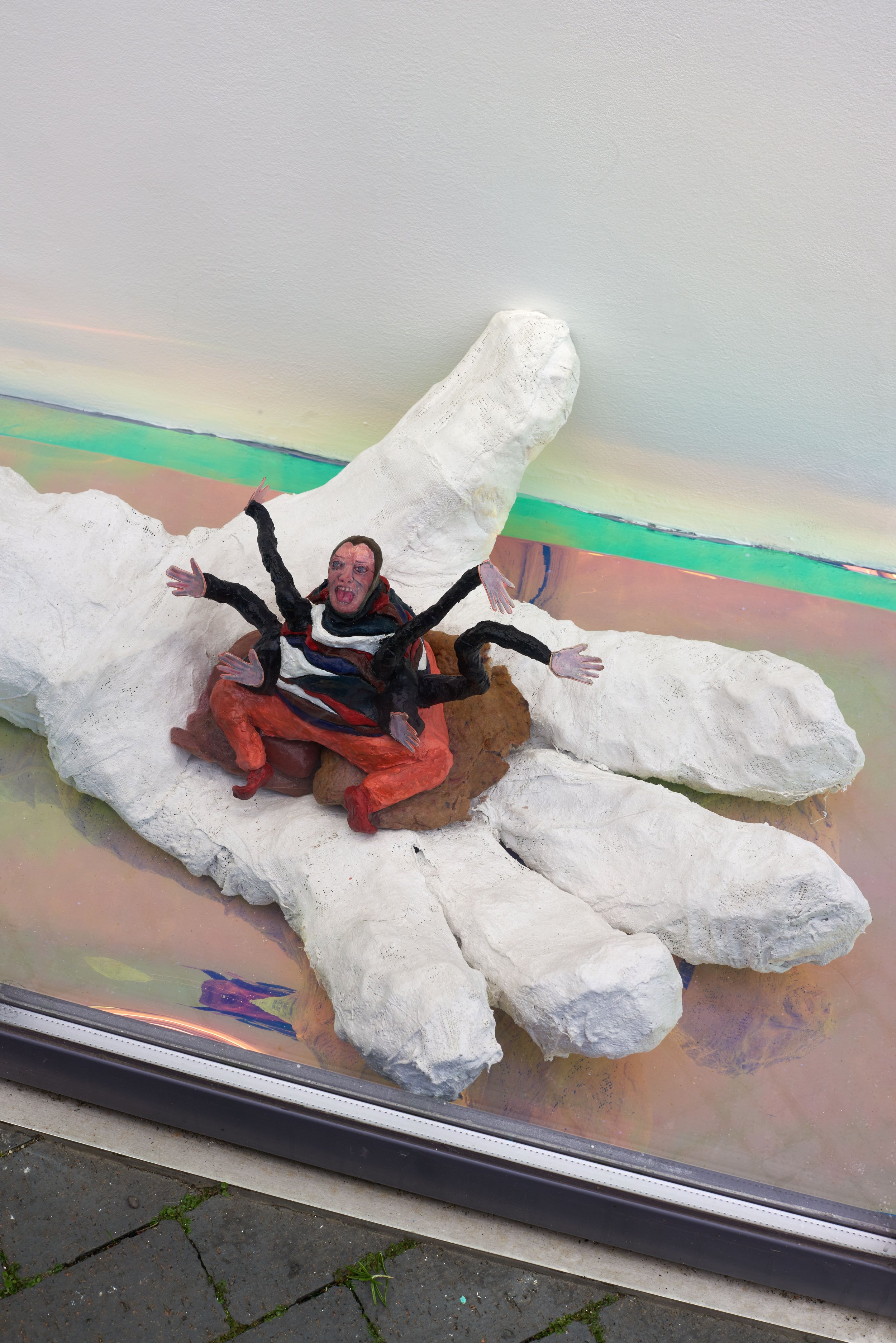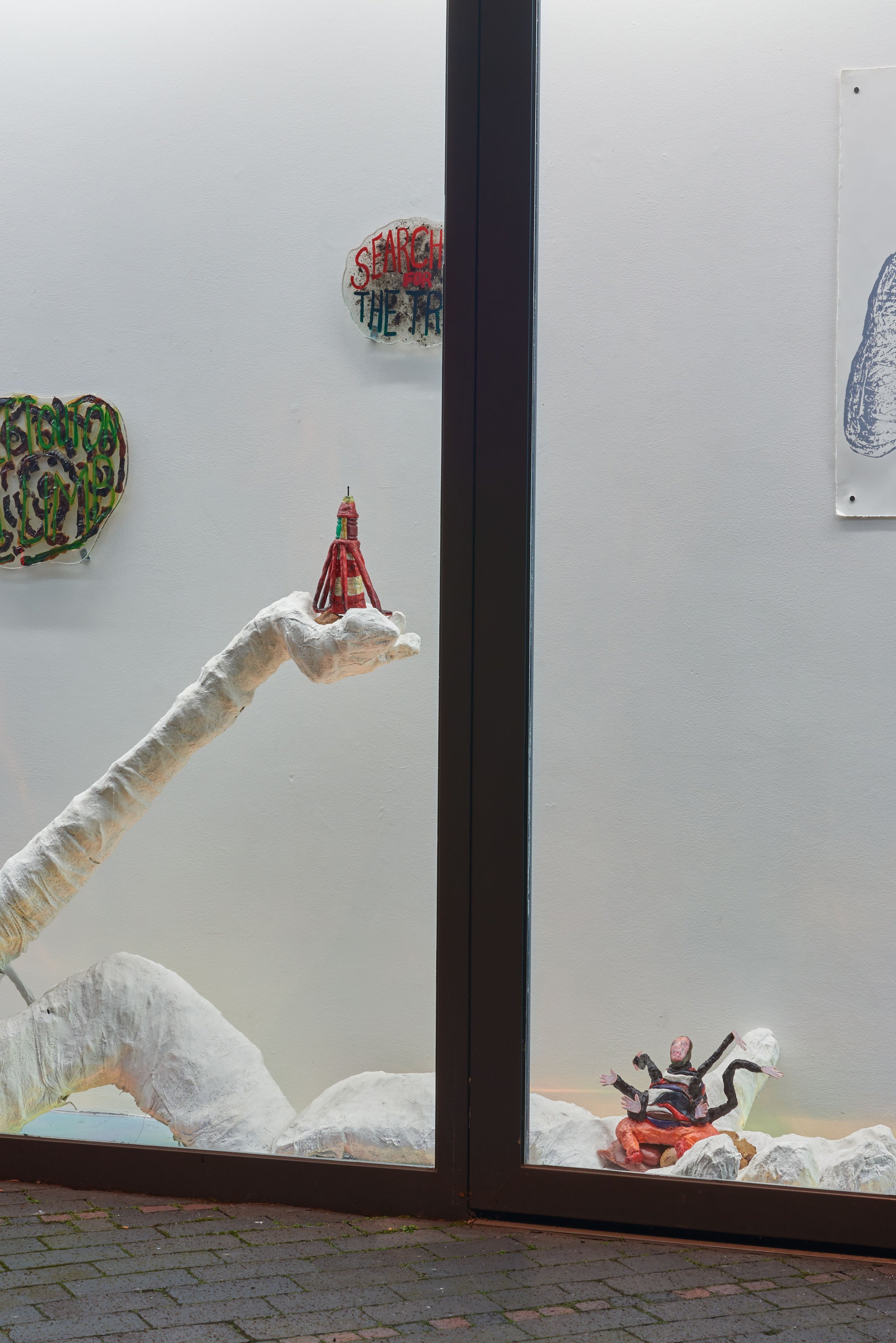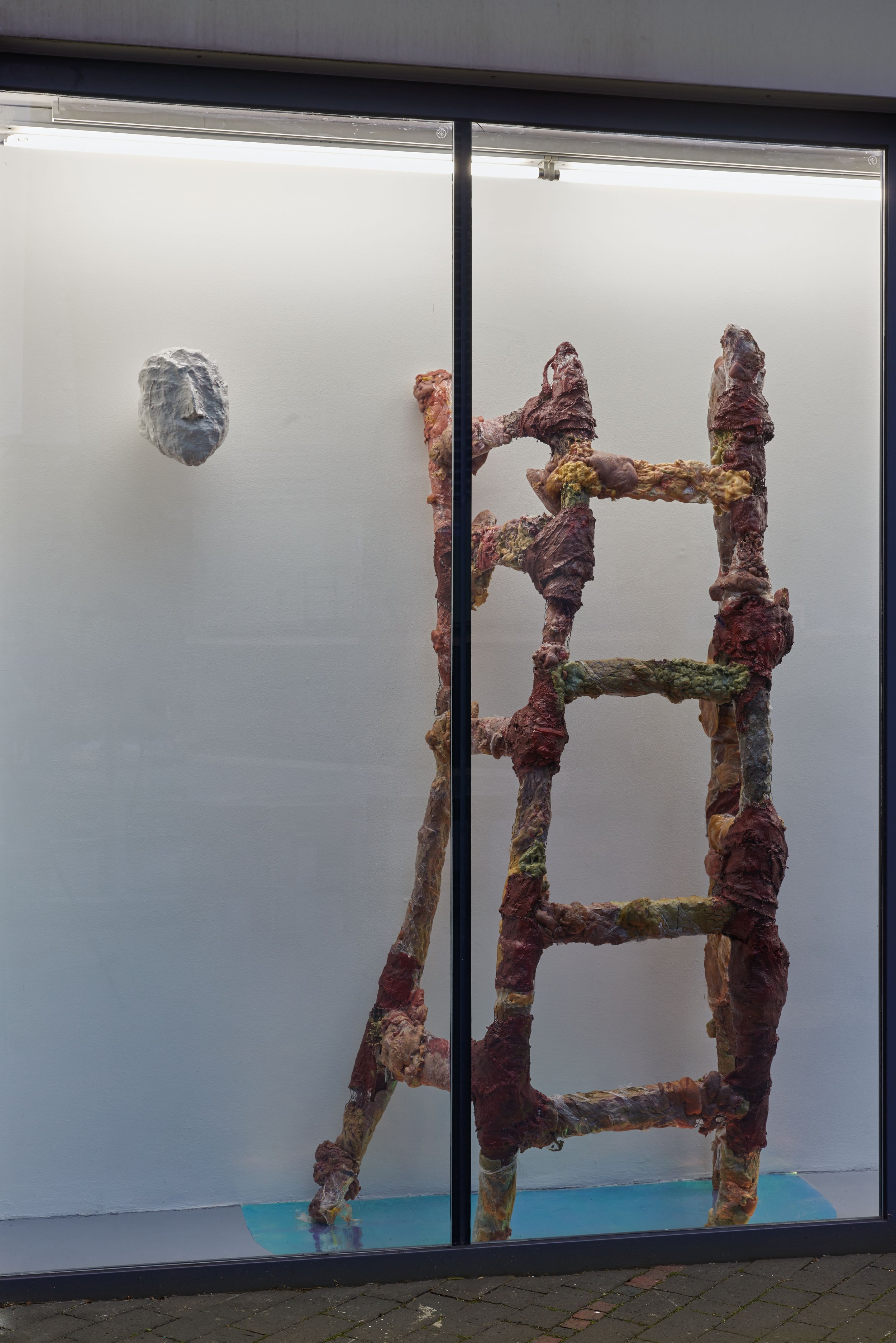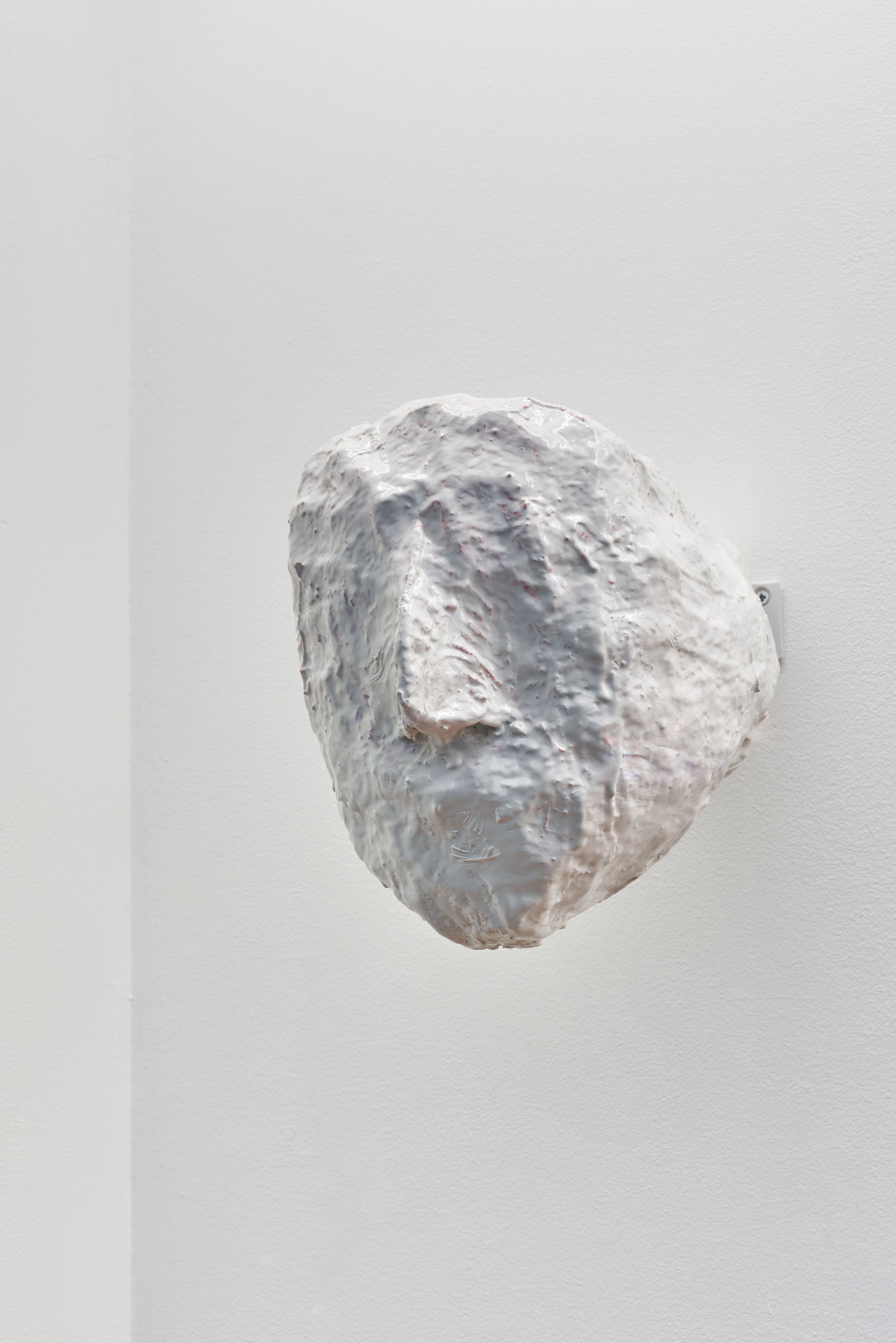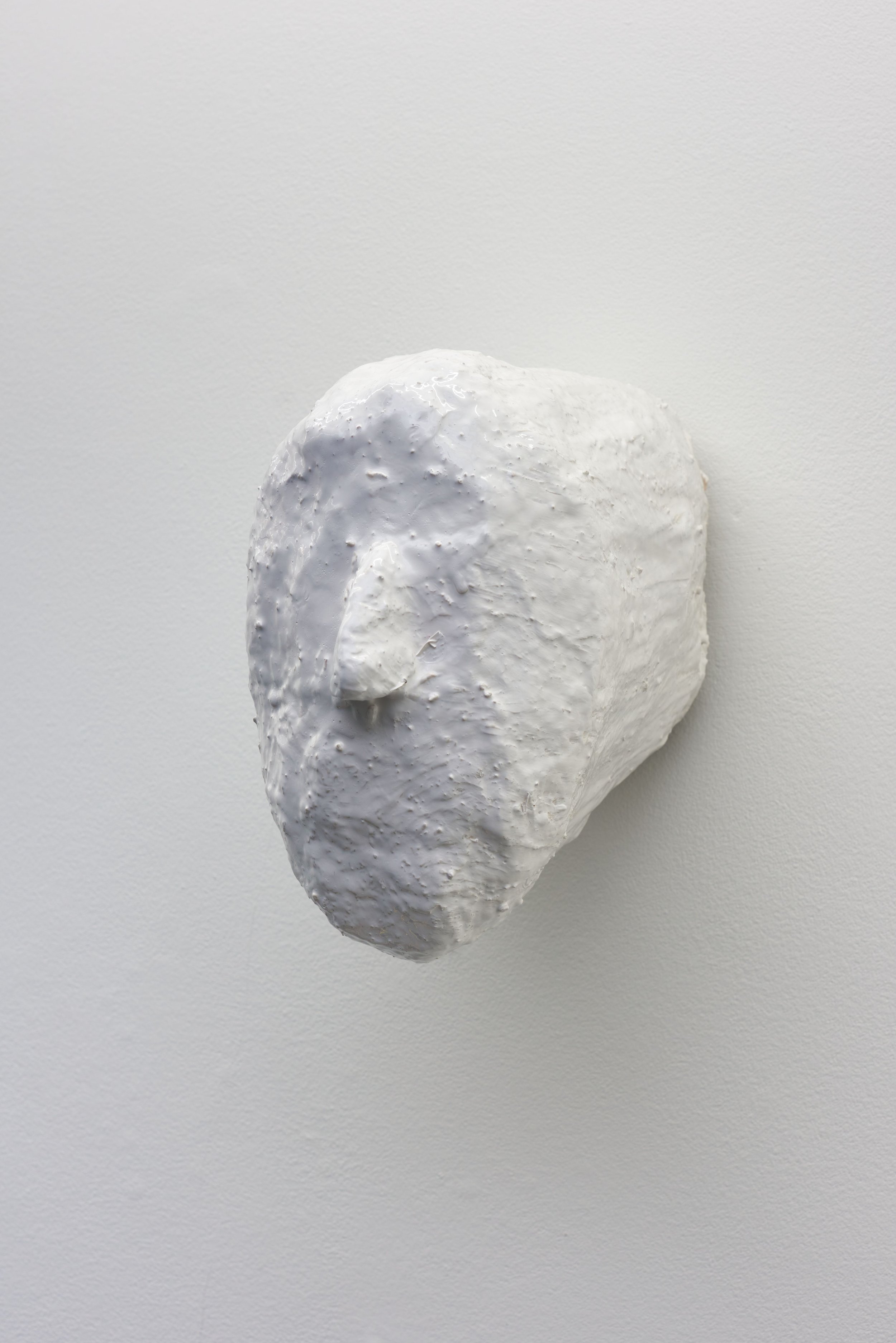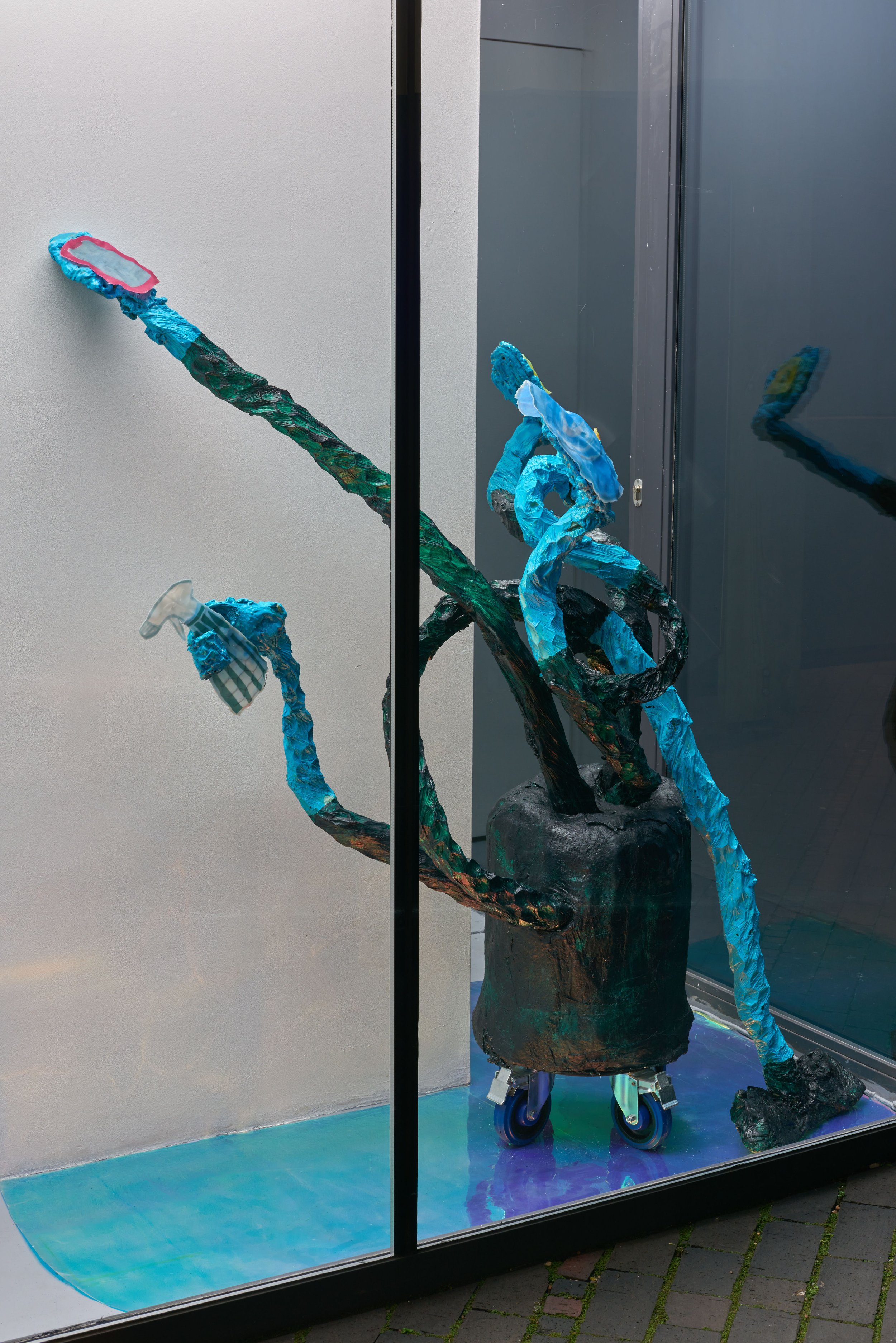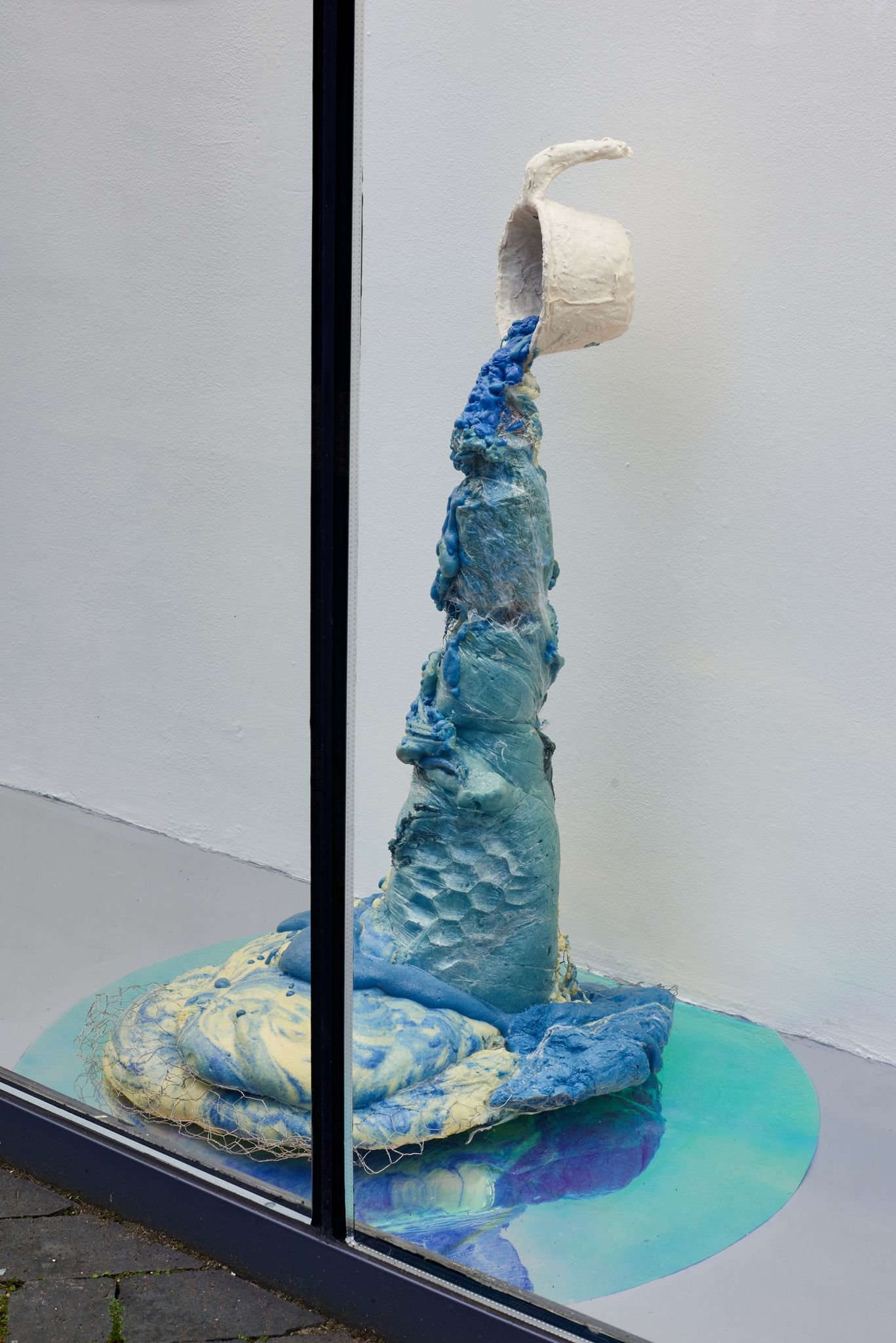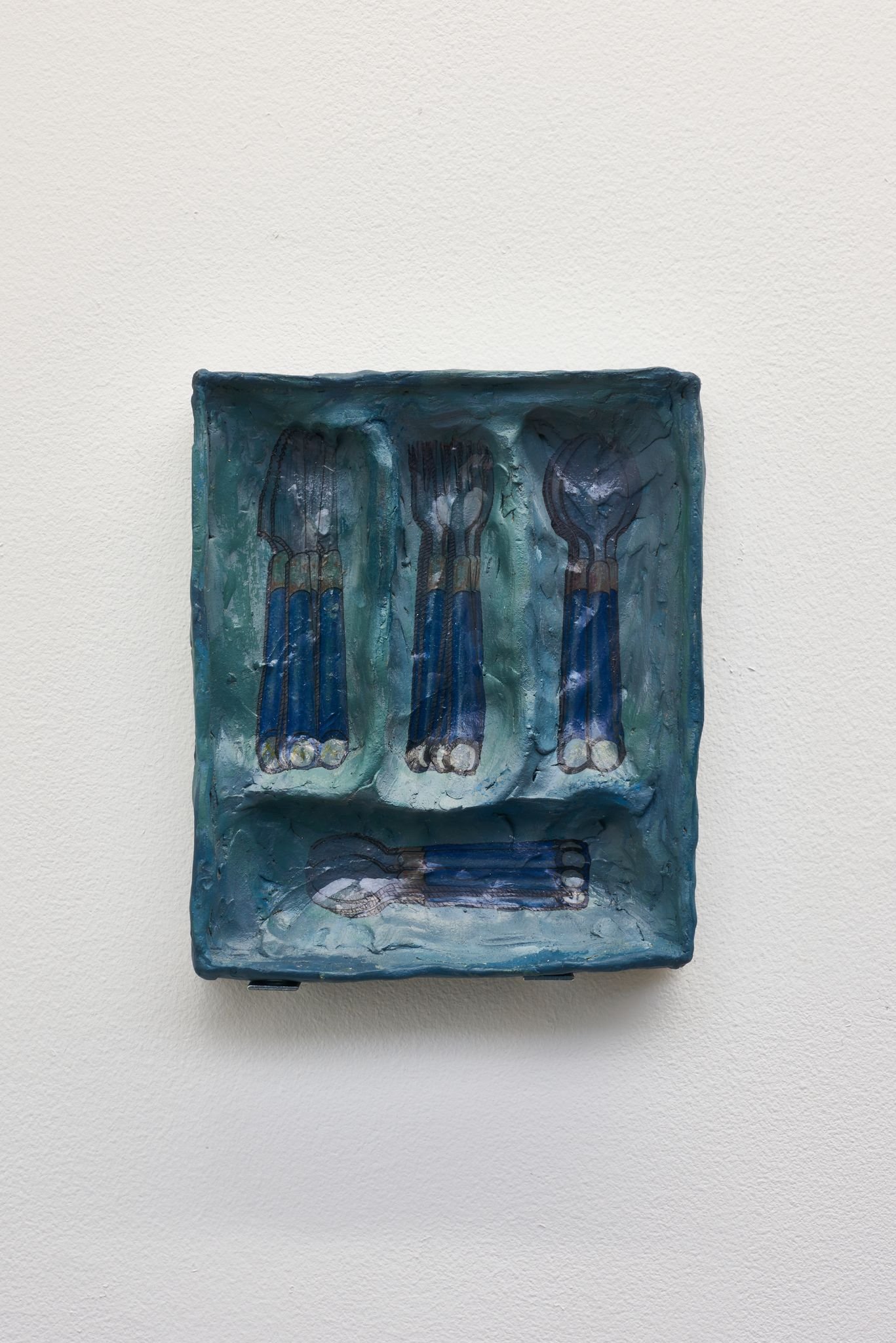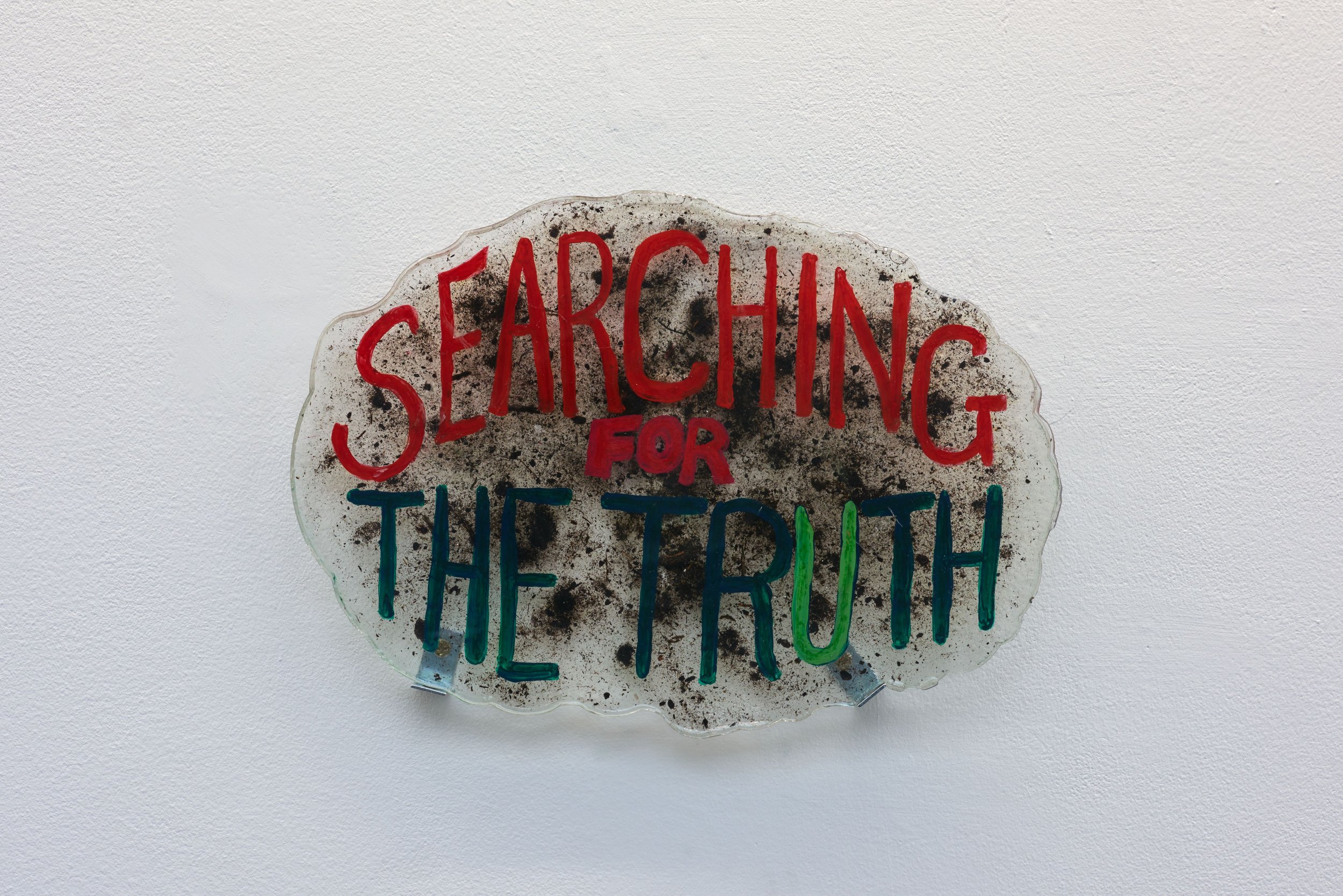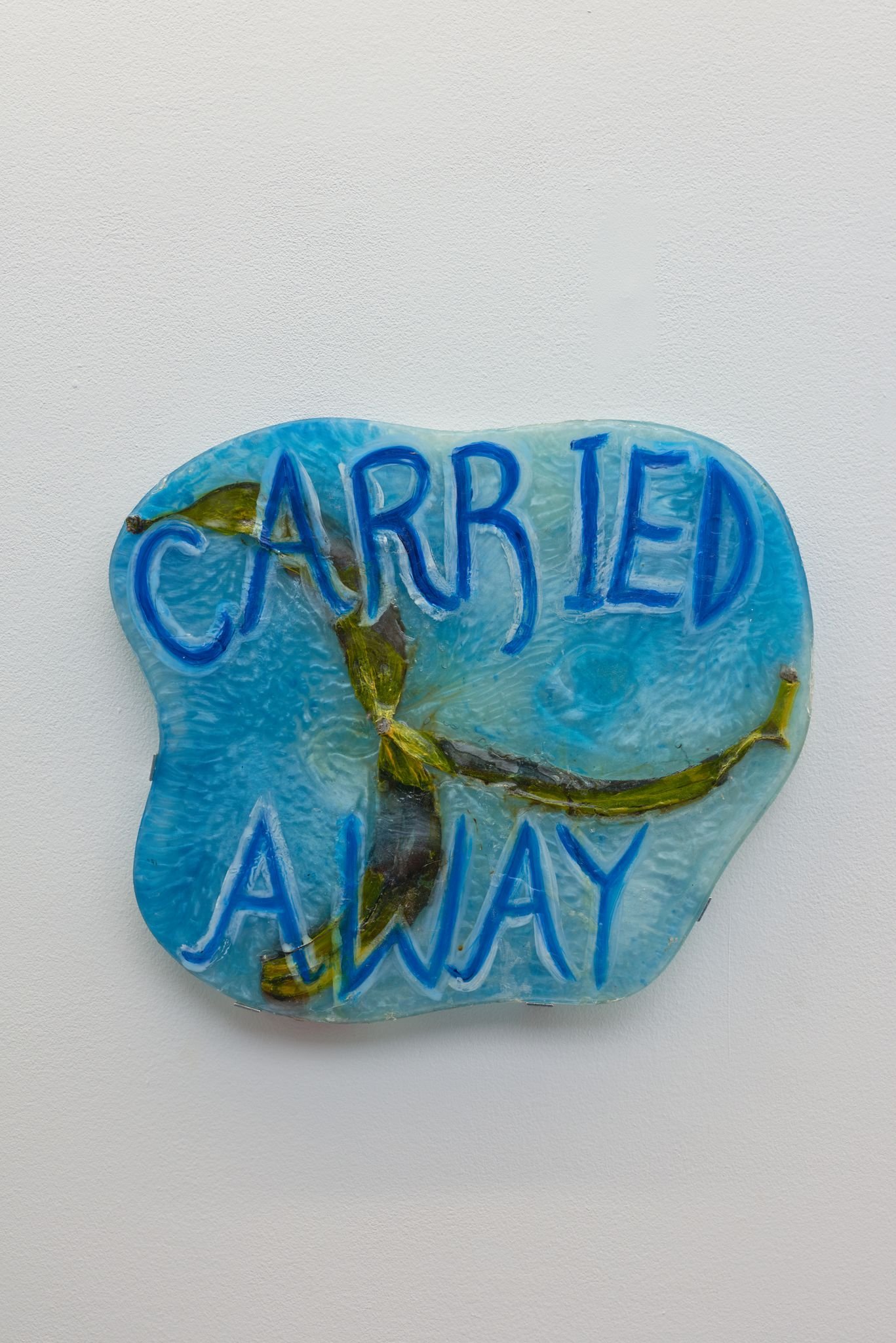Jill McKnight: A room in which many of the parts of our lives were placed
23 January - 20 March 2022
VITRINE
Curated by Chris Bayley
London
London’s street facing showcase for artistic curiosities, VITRINE, presents the work of Jill McKnight in what is the artist’s first solo outing. Comprising of 23 artworks running the length of the space, the linear arrangement is at first provocative of a chronological narrative; it seems to have a starting point and it seems to have an end point.
McKnight has always been concerned with working class identity, born in Sunderland to a family of Irish emigrants whose occupations were steadfast in the trades of the local coastal industries and dockyards. She draws on her lineage to explore the presence of working class stories (or lack of) in cultural discourse. However, the linear organisation of the work is not an instructive way to interpret the show. Linearity is suggestive of straight-forwardness and order. It sets one’s mind to search for definitive answers, concrete understanding and a tangible knowing. “A room in which many parts of our lives were placed” has a sense of the intangible, it is elusive and at times almost hallucinatory. It is more a series of vignettes of the artist’s experiences, memories and preoccupations, which as a whole coalesce into a nebulous experience bigger than any of its single components. As such, attempts to “read” the exhibition are limiting. Instead one should embrace the experience as an opportunity to feel and meditate on the many different themes instigated in the show.
“Devil Grotesque” 2021, pictured above, broaches a number of McKnight’s interests. The work is a pair of large hands, conjoined in an other-worldly and freakish aberration. This nightmarish and unsettling form holds aloft a malformed lighthouse, looming above its counterpart of splayed fingers which presents a six armed figure, maybe the artist herself, maybe a family member. It has a folkloric quality, bringing to mind ancient tales told by fishermen to warn of foreboding dangers, tapping deeply into McKnight’s coastal background. The unease which it evokes points to an artist whose cultural heritage is an ever-present force, one of dominance or perhaps even one of burden, existing large as a persisting reminder. The arachnid human sitting beneath flails its arms in frenzy. How this creature has come into being is a mystery but the expression held by its face is one of anguish or terror.
“Ladder Clotheshorse”, 2021 (pictured below) is probably the most visceral piece in the show. Embodying a range of materials such as chicken wire, hessian, polyurethane foam, plaster, and ship primer paint, the work is a wet twisted umbilical hybrid. Materials are compacted, at times densely congealed and in other instances opening up with gape-like wounds. It forms yet another exotic object born of locality but distorted by memory, experience and sensation. Recalling the ladder making occupation McKnight’s father had as a young adult, this carnal tool for labour relays ideas pertaining to ascent, maybe a working class desire to rise up but as suggested in its duality, it’s an aspiration which is ultimately tethered to domesticity.
Two spectral like faces are stationed at either end of the VITRINE space, almost bookending the bulk of the show. Respectively titled “Storyteller Mother” 2021 and “Storyteller Crone” 2021, they lend themselves to multiple interpretations. Initially one is drawn to matriarchal and familial roles of regaling tales and seeding wisdom, but it’s the passing of time and the physical toll it takes, indicated by their titles and the distance between the two, which lingers as a framing concept for much of the work on display.
Situated anomalously at the very end of the space is “Vacuum Cleaner Hydra” 2021 (pictured below). This creation is a tentacled sea creature-come –cleaning appliance. Evolved by the pressures of the modern environment in a bid to cope with the dizzying tasks of the everyday, it wraps itself in knots, twisting in a spasmodic impossibility of keeping up. Sitting as it does on an iridescent blue sea from which it once came, “Vacuum Cleaner Hydra” exercises an oceanic symbolism at play throughout the exhibition; the planetary body of substance which provided the hotbed for evolution, the vast and treacherous space traversed by migrants and the deep descending abyss which sets the scene for many a myth and folklore all feed into the overall show.
In addition to the ideas of ancestry, gender roles and class background inherent in the show, McKnight’s practice is deeply preoccupied with art history. So many of the works speak of the artists significant to her own artistic identity. The arachnid figure of “Devil Grotesques” has strong overtones of Louise Bourgeois and even Franz Kafka. The former known for her use of spiders and their symbolism of sacrificial motherhood. The later famed for his nightmarish story “The Metamorphosis”, in which a beauracrtic worker is transformed into a drone like insect. The two storytellers which McKnight has created express some semblance to the ghost like apparition in Picasso’s Guernica, as too do the distorted limbs in “Devil Grotesques”. How McKnight situates herself as an artist in the context of art history is instilled with a feeling of uncertainty, given the appearance of the material instability. It is somewhat telling that “Vacuum Cleaner Hydra” has been set the task of cleaning the art space itself, almost as if the Max Ernst-ian influence weighs heavily on the artist, making it a quality for self-consciousness. The custodian duties which it performs is suggestive of a role subservient to the establishment, beholden to its authority.
This aspect of her work is actually refreshing when considering contemporary arts penchant for appropriating works of the past with impunity (and often disregard). McKnight demonstrates a reverence for her influences which at times veers unnecessarily into vulnerability and even self doubt, however, with the success of “A room in which many of the parts of our lives were placed”, McKnight should be confident to cast any such doubts aside. The exhibition is proof positive of an artistic mind adept at entwining cultural and personal histories with real consideration; using the influences of the past to create something wholly new and carve out an artistic identity which forefronts these dualities with contemporary urgency.
Artist influence, cultural heritage, gender and class identity are not so much worn on McKnight’s sleeve as they are enmeshed, absorbed and entangled into the body-viscera of her work. Our bodies have the capacity to hold stories and memories, they have the capacity to grow and change, shed skin and take on new attributes. One’s sense of self is a continuous and ever-changing story; lives may have beginnings and ends but the identities that exist in between are infinitely nonlinear, decentred, slippery and delightfully intangible.
Author: Afterview
Photographs curtesy of: Jonathan Bassett

